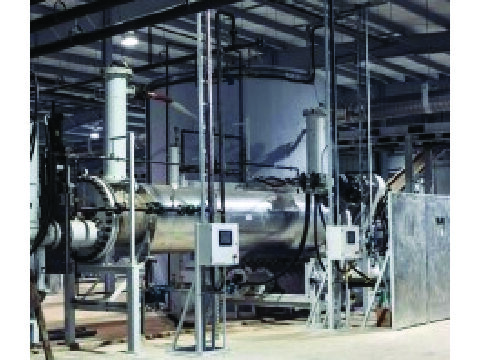
Hydrothermal Process for Municipal Solid Waste
The processing system was developed that significantly reduces municipal solid waste (MSW) volume by converting it into usable end products… Continue reading
Treatment of Solid Waste by Pyrolysis and Gasification Process
Abs:High temperature pyrolysis and gasification process compared to incineration, can generate a wider range of process by-products. The traditional incineration process can only generate electricity, whereas pyrolysis and gasification process is able to produce different byproducts, including biochar, bio-fuel and syngas, according to different industrial needs to produce a variety of re-use value. Pyrolysis and gasification processes can help achieve the goal of renewable energy, by reducing emissions and curbing global warming and in line with the initiative of the Kyoto Protocol. While the traditional waste incineration energy is more likely used for steam boiler power generation, resulting in lower energy efficiency… Continue reading
Algae Control and Solids Removal – Biodome System
Abs: High levels of TSS can make the water lose its ability to support a diversity of aquatic life. Adequate treatment is necessary to ensure that TSS is not present at levels of concern in the water. TSS can also result from algae growth. The Bio-Dome technology showed a remarkable impact in reducing the concentrations of TSS and algae in lagoon, as well in the other pond systems… Continue reading
Chitosan and its application on wastewater treatment
Abs: Chitosan acetate has been used in water treatment for more than three decades. Chitosan-based water treatment has been used extensively in various industrial and municipal applications and commercial aquarium clarification. Chitosan also removes oil and grease from water via its ability to form insoluble emulsions that may be separated from water gravimetrically or by filtration. Chitosan is also known to chelate (form electrostatic bonds with) some heavy metals including copper, zinc, arsenic and several other regulated toxic heavy metals… Continue reading
REACTIVE ELECTROCHEMICAL MEMBRANE FILTRATION
Abs: Physical membrane separation suffers from membrane fouling due to the deposition and adsorption of various foulants. Frequent membrane backwashing and cleaning is required to maintain a desired separation and functional filtration, which elevates the operational cost. The reactive electrochemical membrane (REM) technology will use low level direct current (DC) to control and mitigate membrane fouling during filtration or backwash to better recover flux… Continue reading